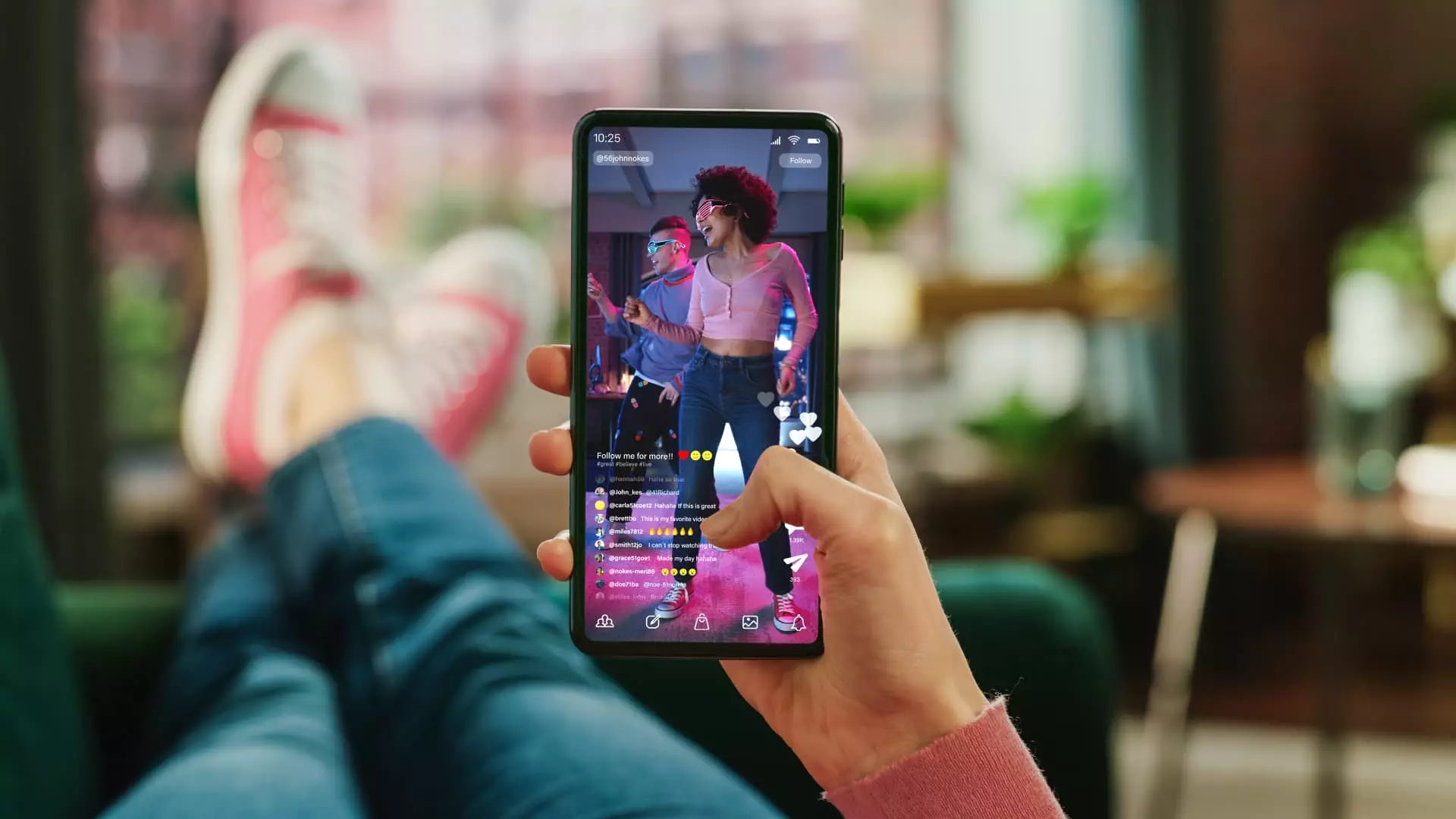In the realm of digital content consumption, TikTok has positioned itself as the quintessential platform, redefining how millions engage with short-form videos. Launched in 2016 by ByteDance, TikTok has rapidly evolved from a casual social app into a global phenomenon, boasting an astonishing 1.12 billion monthly active users around the globe. This staggering growth is underpinned by a staggering user engagement rate, with American audiences spending an average of 108 minutes daily on the platform. Such retention levels have created a seismic shift in social media and transformed TikTok into a key player that impacts everything from entertainment to e-commerce.
Experts like Jasmine Enberg, a notable voice at Emarketer, emphasize TikTok’s cultural significance, stating that it has become the “center of the internet for young people.” This characterization points to an essential aspect of TikTok’s allure—its ability to seamlessly blend dance, humor, trends, and social commentary into fast-paced snippets that evoke immediate reactions. As TikTok leads the charge, competitors such as Meta and Google are scrambling to recalibrate their offerings, launching features that mimic TikTok’s format in the hope of recapturing some of its massive audience.
The Algorithm: Why TikTok Remains Unmatched
One critical factor that separates TikTok from its competitors is its algorithmic sophistication. TikTok’s algorithm provides an uncanny ability to serve highly personalized content to users with astonishing precision. This data-driven approach deepens user engagement by creating a feedback loop of content that aligns with individual preferences. While platforms like Instagram Reels and YouTube Shorts have made strides with similar features, they struggle to achieve the same level of relevance and retention.
As leading companies follow the trend, some are even exploring dedicated apps aimed exclusively at short-form content. Microsoft-owned LinkedIn, a platform traditionally known for professional networking, is now experimenting with TikTok-style feeds. However, these efforts often feel more like reactive measures rather than authentic attempts to carve out unique niches. As TikTok continues to evolve—integrating e-commerce features and longer videos—one has to wonder if rivals can meaningfully catch up, or if they will remain forever in its gigantic shadow.
The Psychological Impact of Infinite Scrolling
The rise of TikTok and short-form content elicits a fascinating dichotomy. While it fuels creativity and provides a canvas for self-expression, there is an undeniable darker side. With skyrocketing consumption rates comes growing concern over mental well-being, particularly among younger users. Experts such as Dr. Yann Poncin from Yale University highlight alarming trends, indicating that the endless scrolling paradigm can lead to detrimental effects on sleep patterns and heightened anxiety.
Dr. Poncin articulates a critical observation: “Infinite scrolling and short-form video are designed to capture your attention in short bursts.” This contrasts sharply with traditional storytelling, which invites audiences into prolonged narratives that develop over time. In a world increasingly focused on immediate gratification, the challenge arises—are we sacrificing depth for brevity? The psychological toll of such interactions cannot be overlooked, drawing attention to a society increasingly defined by its quick-consumption habits.
The Financial Challenge: Monetizing Short-Form Video
Despite the high engagement levels that TikTok realizes, monetization remains a challenging pursuit. Though TikTok boasts impressive revenues, estimated at around $23.6 billion last year, many creators find their fortunes less favorable. Unlike long-form platforms like YouTube, which benefit from multiple ad placements, short videos offer limited advertising opportunities. As a result, even viral content that reaches millions of viewers often translates into meager earnings—usually just a few dollars for every million views.
Innovations are in the air; Instagram is increasingly leaning into brand partnerships and tools like “Trial Reels,” which enable creators to share with non-followers first, allowing a low-risk exploration of content. However, with Meta openly admitting that monetization strategies for its Reels feature are still “a work in progress,” the financial viability for new and existing creators remains in limbo.
As TikTok faces scrutiny regarding its ownership structure and potential regulation, competitors like Meta and YouTube eye the opportunity for rebirth. If TikTok faces significant operational hurdles, these platforms are poised to seize upon an influx of displaced ad dollars. More than a mere rivalry, this moment could shape the very nature of digital engagement for years to come.

